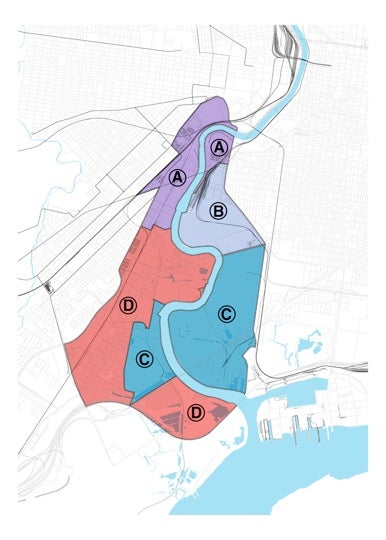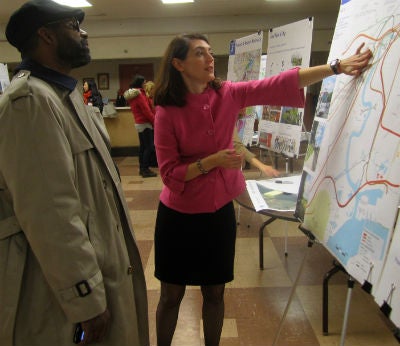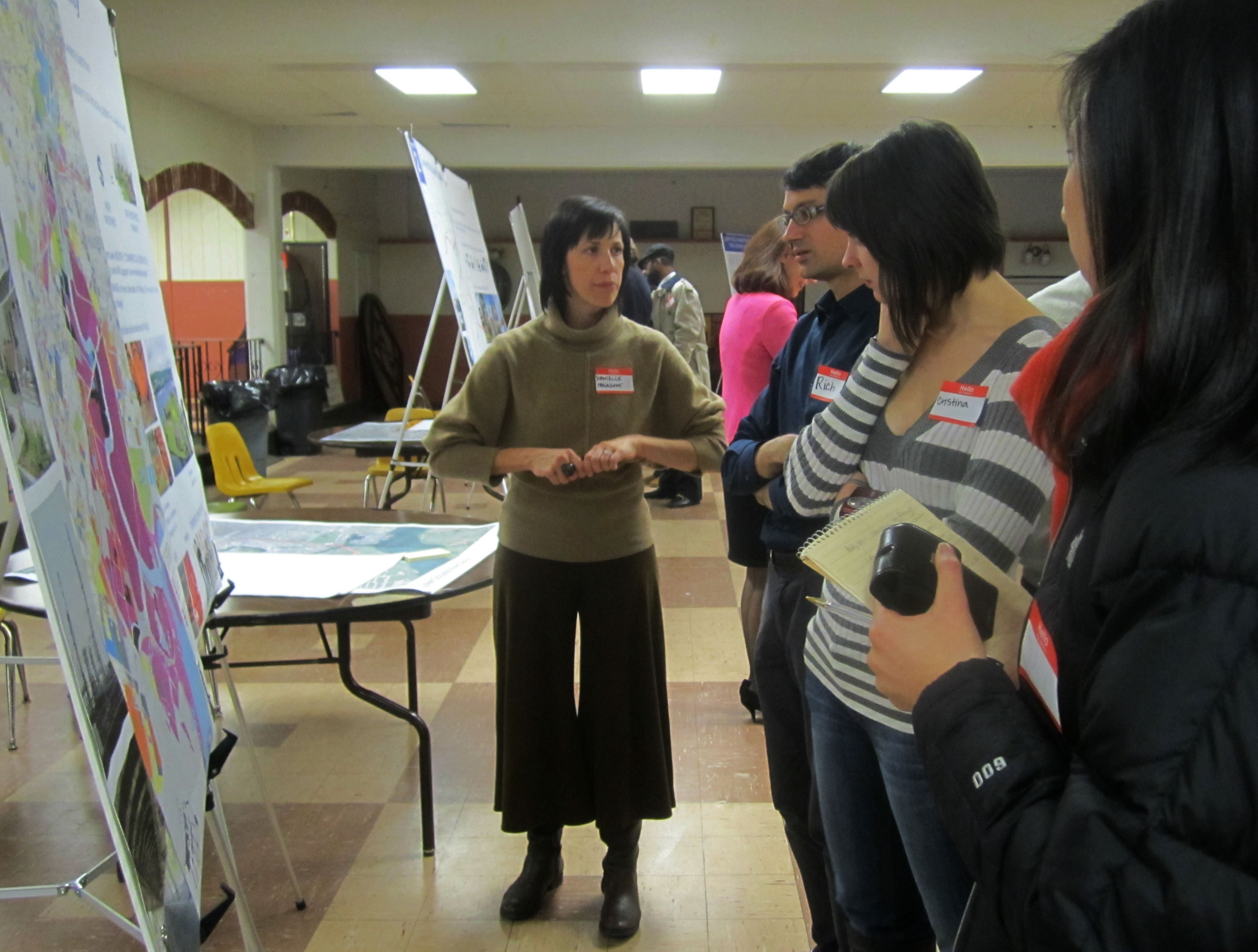Putting the Lower Schuylkill Master Plan in motion
By Christine Fisher
For PlanPhilly
With companies like DuPont and Dow Chemical shutting their Philadelphia-based facilities, the city’s industrial portfolio has taken major hits in the past few years alone, and with Sunoco planning to leave its 1,400-acre industrial property this coming summer, many question what the future holds.
Now the Philadelphia Industrial Development Corporation, Philadelphia City Planning Commission and the City of Philadelphia’s Commerce Department are hoping to create a blueprint for high-quality sustainable redevelopment of one of the city’s historically industrial corridors.
The three organizations, with financial support from the William Penn Foundation and City of Philadelphia, are in the process of drafting the Lower Schuylkill River Master Plan, a strategy they hope will maximize the area’s potential, reconnect it with the city and provide access to recreational opportunities along the river itself.
The area in focus extends roughly from Interstate 76 on its eastern boundary to Lindbergh Boulevard on the western boundary, Woodland Cemetery on the northern edge and Interstate 95 on the southern edge. The 4,100-acre zone is roughly the size of Center City and home to two-thirds of the city’s under-utilized industrial land, said Tom Dalfo, vice president of real estate services at PIDC, and Danielle DiLeo Kim, director of special projects at the PCPC.
With approximately 95 percent of the land currently zoned for industrial use, the space includes everything from petroleum refinery plants led by Sunoco to the new Philadelphia Wholesale Produce Market and Bartram’s Garden, a “last vestige of what [the river] used to look like in its colonial early days,” Dalfo said.
“It’s dynamic, and yet there are parts of it that are almost like Heart of Darkness,” said Harris Steinberg, founding executive director of PennPraxis. “You don’t know, kind of, where you are when you’re there, but you know you’re within like five minutes of a major metropolitan area.”
Steinberg describes parts of the area as “being cut off by a tourniquet of highways and the rails and all of the infrastructure that at one time really served this heavy industrial area and now also serves to separate it from a city that’s trying to connect with it.”
Up until now, the area has not had a master plan, and DiLeo Kim said in many ways this held the area back.
The recent Philadelphia2035 plan and Industrial Land and Market Strategy report were driving factors behind the current Lower Schuylkill Master Plan, and DiLeo Kim said many of the master plan’s objectives align with Philadelphia2035 goals, including targeting industrial land for continued growth and development, ensuring an adequate distribution of industrial land and repurposing former industrial land for new uses.
“In Philadelphia2035 we have a kind of ambitious forecast of hoping by the year 2035 they’ll be an additional 100,000 people living in the City of Philadelphia and an additional 40,000 jobs located across the city as well,” DiLeo Kim said. PCPC is hoping the Lower Schuylkill Master Plan contributes to these numbers.
Dalfo, DiLeo Kim and Steinberg all stress that the area has tremendous potential for booming industry, especially given its history and immediate proximity to University City and Center City, the Navy Yard’s Keystone Innovation Zone, Philadelphia International Airport, the city’s sport complexes and major rail and highway transit.
Though Dalfo said it is too early in the planning stages to set any concrete objectives, those involved hope to take advantage of each of these resources.
“The key, I think, is to capitalize on existing assets, of which we have many,” Steinberg said. “The thinking that is emerging… is to kind of understand and to encourage and capitalize on the assets that are built within and around the study area and figure out ways to strategize around industries that are either beginning or thriving.”
By focusing on the industrial sector, the groups hope to create a range of new jobs in the city.
“Industrial jobs offer several layers that appeal to the overall health of the city’s economy and that really speak to the range of people and the workforce,” Dalfo said.
This past week, PIDC, PCPC and the Commerce Department hosted two open house events – one on the east side of the river and one on the west – to engage local residents and get feedback on the plan thus far. The events attracted everyone from planners, to Lower Schuylkill neighborhood residents, students from PennDesign’s first year workshop and more.
Rich Freeh, one of the PennDesign students who attended an open house, said he was, “hoping to see what level of community involvement there is… and to what extent the neighborhood is interested in seeing industry return to a great role in the city.”
Morgan Youngblood, who lives near 26th and Christian Streets, also attended an open house.
“I believe it will have a positive effect,” he said. “If you look really long range, you can see that this will probably cause more redevelopment in this neighborhood specifically.”
Youngblood said in addition to redevelopment he hopes to see more open space for things like parks and baseball fields.
Maximizing recreational opportunities and providing access to the riverfront is one of the goals of the Lower Schuylkill River Master Plan, Dalfo said.
The sponsors are also working with the Philadelphia Water Department to incorporate progressive storm water management systems, and they will be hosting additional open house events as the planning continues. They hope to complete the plan sometime in the late summer or early fall of 2012.
“It’s important for Philadelphia to recognize [the Lower Schuylkill] as an area that needs a plan for economic stability and also to recognize the industrial past,” DiLeo Kim said. “They key to keeping this a viable, industrial district is a plan.”
Contact the reporter at fisher.christine@temple.edu
WHYY is your source for fact-based, in-depth journalism and information. As a nonprofit organization, we rely on financial support from readers like you. Please give today.






